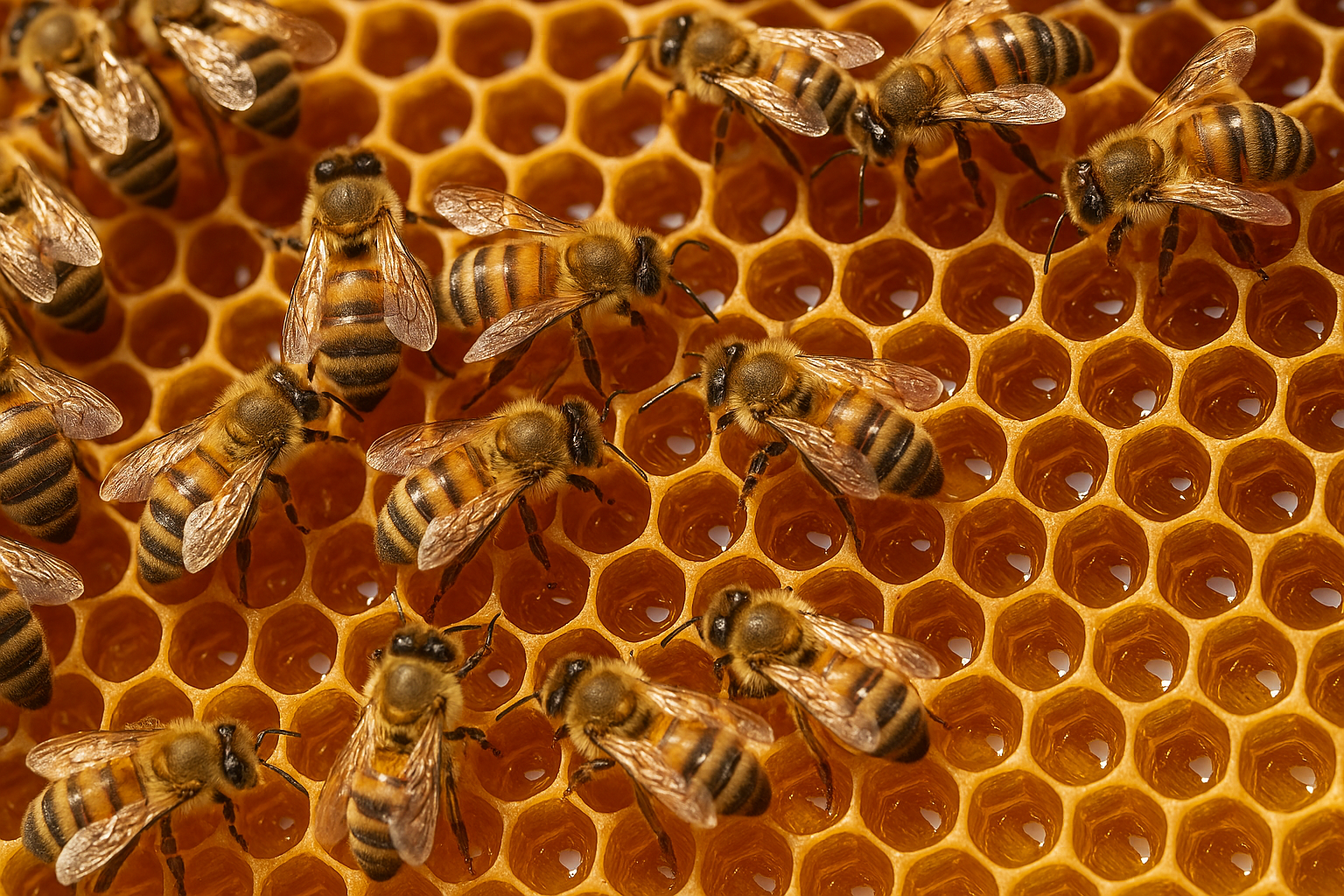Nature’s Tiny Powerhouses
When it comes to hardworking creatures, honeybees deserve the Employee of the Year award—every year, for eternity. These little buzzing dynamos keep our ecosystems running smoothly, our gardens pollinated, and our pantries stocked with golden honey. Curious about how these incredible insects live, work, and communicate—or even thinking about starting your own backyard beehive? You’re in the right place. With the right tools, knowledge, and a helpful guide like Michael York’s Beekeeping for Beginners: A Complete Guide to Building Your Own Beehive, anyone can start cultivating a thriving hive at home.
Do Honeybees Sleep?
Yes! Honeybees actually do catch some shut-eye. Worker bees snooze in short bursts, taking several naps throughout the day and night. On average, they get about 5 to 8 hours of sleep within a 24-hour period. Younger bees sleep inside the hive, while older foragers rest near the outer edges.
Sleep is crucial for bees—just like us, a tired bee is less efficient. Studies show sleep-deprived bees struggle to navigate and even forget their “waggle dance” directions. Imagine forgetting your GPS password every time you’re drowsy—that’s life for a groggy bee.
How Many Hours Do They Work?
Honeybees are the original workaholics. Forager bees typically put in about 12 hours a day searching for nectar and pollen. During peak bloom, they may make 50 to 100 trips a day, visiting thousands of flowers.
The “indoor” bees are busy too—nursing larvae, cleaning the hive, fanning their wings to regulate temperature, and processing nectar into honey. Every bee has a job, and they work in shifts to keep the hive running like a 24/7 factory. Retirement? Not really. Worker bees literally work themselves to death after about 5 to 6 weeks of intense labor in the summer.
🛠️ Beginner Beekeeping Kit
Everything you need to launch your beekeeping journey in one box. A quality starter kit usually includes a protective suit, smoker, hive tool, and frames—saving you from scrambling to buy each item separately. Perfect for beginners who want to keep bees safely while setting up their first hive. Buy it at Amazon
Who’s Really in Charge of the Hive?
You might think the queen bee rules with an iron stinger, but the hive isn’t a monarchy—it’s more like a democracy.
The queen bee’s job is to lay eggs (up to 2,000 per day at her peak). She keeps the hive stable by releasing pheromones that regulate behavior. But she doesn’t give orders.
The real decision-makers? Worker bees. For example, when it’s time to find a new nesting site, scout bees explore and perform waggle dances to “vote” on potential locations. The more bees that dance for a spot, the more support it gains, until consensus is reached. It’s like a very lively town hall meeting—with better dance moves.
So, while the queen is essential for reproduction, the hive itself runs as a collective. The workers decide when to swarm, when to replace a queen, and even when to kick out the lazy drones. (Sorry, fellas.)
🌼 Pollinator-Friendly Flower Mix
Give bees a reason to stop by your yard with a vibrant mix of wildflowers, herbs, and blooming shrubs. These low-maintenance plants add color to your garden while boosting pollination for your fruits and vegetables. Great for homesteaders and gardeners who want to support local pollinators naturally. Buy it at Amazon
More Fascinating Honeybee Facts
🍯 Honey Never Spoils
Archaeologists have found pots of honey in Egyptian tombs that are over 3,000 years old—and still perfectly edible. Thanks to its low moisture and natural acidity, honey is basically immortal food.
🌡️ Bees Air-Condition the Hive
Worker bees fan their wings in unison to regulate hive temperature. They keep it around 95°F year-round, whether it’s blazing hot or freezing outside. Think of it as central air—powered by wings.
🕺 The Waggle Dance
Bees use a “dance language” to tell their sisters where food is. The direction and duration of the waggle tells others how far and where to fly. It’s GPS without the satellite.
🚀 Bee Speed & Mileage
A honeybee can fly about 15 mph and may visit 50,000 flowers to make just one pound of honey. That’s some serious mileage on those tiny wings.
🐝 Drone Life (Short and Sweet)
Male bees, or drones, don’t have stingers and don’t work. Their only job is to mate with the queen—and if they succeed, they die right after. Talk about a tough dating scene.
🧠 Bee Brains Are Tiny but Mighty
A honeybee’s brain is about the size of a sesame seed, but they can recognize human faces, learn patterns, and even count up to four.
⚔️ Hive Security
Bees can recognize “intruders” by scent. Guard bees protect the hive entrance and will challenge strangers—including bees from other colonies. No password? No entry.
Final Buzz
Honeybees are more than honey-makers—they’re a symbol of teamwork, endurance, and balance. They sleep, hustle, and communicate to keep their world thriving. Ready to bring the buzz to your backyard? Starting a hive is easier than you think, and with the right tools and guidance, you can enjoy fresh honey while helping support local pollinators. Grab a Beginner Beekeeping Kit, explore a pollinator-friendly garden, and check out Michael York’s Beekeeping for Beginners for step-by-step instructions. Your backyard could soon be a thriving haven for honeybees—and a sweet reward for you!
🍯 Honey Extractor
When your hive starts producing, a honey extractor is the game-changer that lets you harvest liquid gold without destroying the comb. Stainless steel models are durable, easy to clean, and designed for long-term use—making them a smart investment for anyone serious about producing their own honey. Buy it at Amazon
🐝 Fun thought: If humans worked like honeybees, we’d all need multiple jobs, short naps around the office, and a few friends willing to dance every time we made a decision.







Leave a Reply